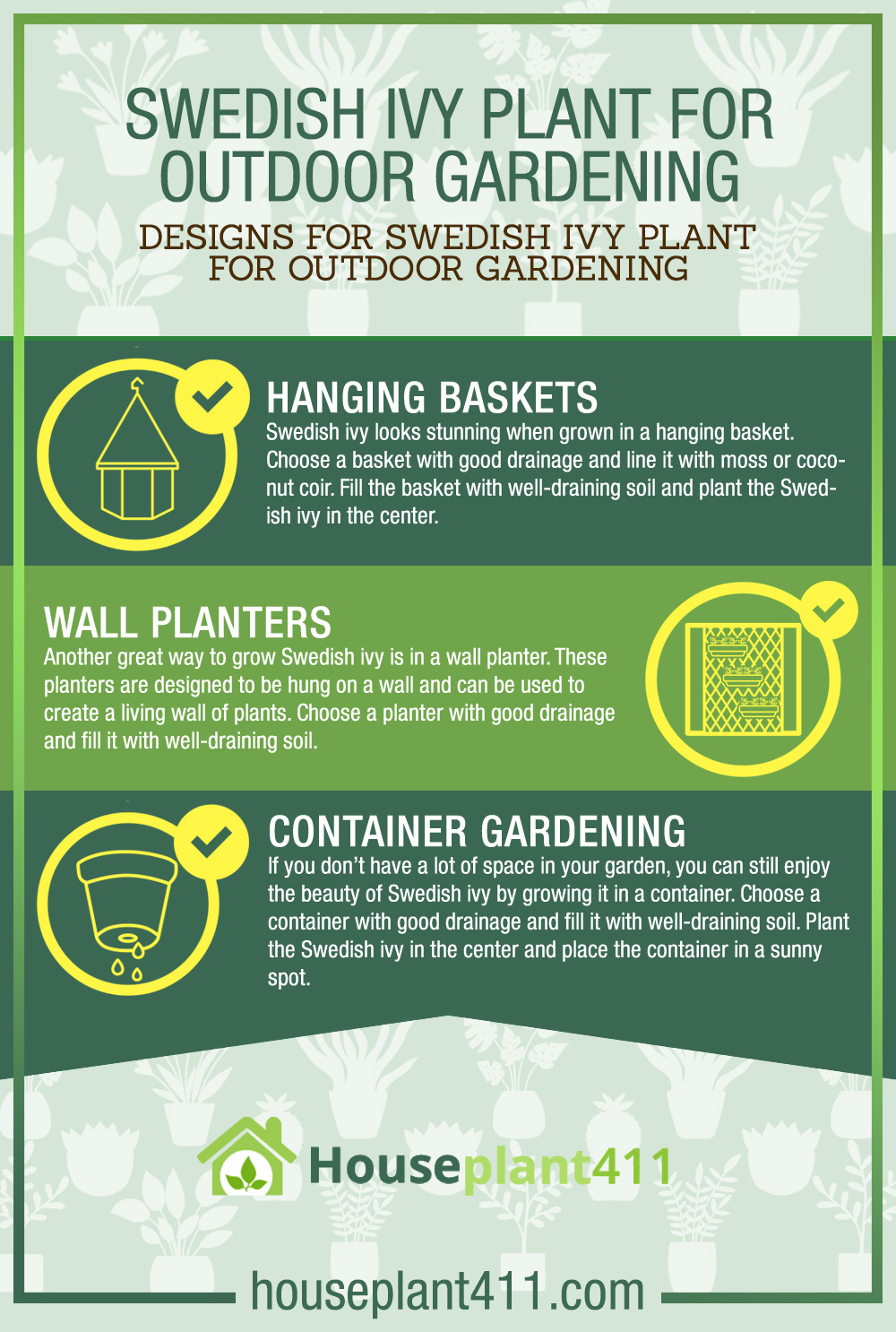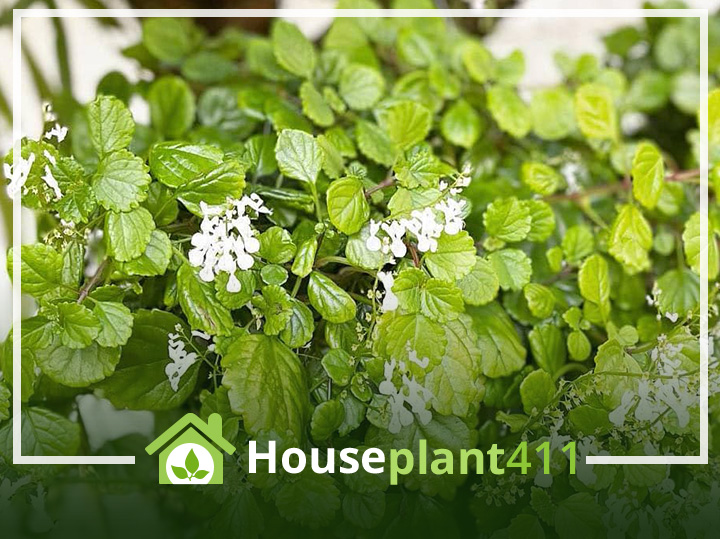Swedish ivy is a popular houseplant that can also be grown outdoors. Its lush green foliage and cascading vines make it a beautiful addition to any garden or patio. However, like any plant, it requires proper care and maintenance to thrive.
Swedish Ivy, also known as Plectranthus australis or Plectranthus verticillatus, is a popular houseplant native to northern Australia and the Pacific Islands. It is a trailing plant that looks best in a hanging basket, allowing its branches to drape gracefully. This plant is known for its beautiful foliage and is ideal for beginners as it thrives in a range of soil, watering, and light conditions. It prefers a soil pH between 5.5 and 6.5, bright, indirect sunlight for four to six hours every day, and high humidity.
In this blog, we will discuss the best designs and maintenance tips for Swedish ivy plants for outdoor gardening. Stay with us to learn more about the design and maintenance of these plants outdoors.
Designs for Swedish Ivy Plant for Outdoor Gardening
Swedish ivy is a trailing plant that looks best when grown in a hanging basket or a container that allows its vines to cascade down. The Swedish Ivy can thrive both in outdoor and indoor gardens. The plant comes with numerous benefits that can elevate the standard of your indoor and outdoor garden.
Here are some design ideas for growing Swedish ivy in your garden:
Hanging Baskets
Swedish ivy looks stunning when grown in a hanging basket. Choose a basket with good drainage and line it with moss or coconut coir. Fill the basket with well-draining soil and plant the Swedish ivy in the center. As the plant grows, its vines will cascade down, creating a beautiful display.
Wall Planters
Another great way to grow Swedish ivy is in a wall planter. These planters are designed to be hung on a wall and can be used to create a living wall of plants. Choose a planter with good drainage and fill it with well-draining soil. Plant the Swedish ivy in the planter and watch it grow.
Container Gardening
If you don’t have a lot of space in your garden, you can still enjoy the beauty of Swedish ivy by growing it in a container. Choose a container with good drainage and fill it with well-draining soil. Plant the Swedish ivy in the center and place the container in a sunny spot.

How to Plant Swedish Ivy in an Outdoor Garden
Swedish Ivy can be planted outdoors in USDA hardiness zones 10 and 11, where the temperature doesn’t fall below 30°F (-1°C). Here are the steps to plant Swedish Ivy outdoors:
- Choose a Location: Select a location with well-draining soil and partial shade. Swedish Ivy prefers soil with a pH between 5.5 and 6.5.
- Prepare the Soil: The soil should be rich in organic matter, such as compost or peat moss. Mix the soil with the organic matter to improve the soil’s structure and drainage.
- Water the Plant: Water the plant thoroughly before planting it in the ground. Dig a hole that is twice as wide and deep as the plant’s root ball.
- Plant the Ivy: Gently remove the plant from its container and loosen the roots. Place the plant in the hole and fill the hole with soil. Press the soil firmly around the base of the plant to remove any air pockets.
- Water the Plant: Water the plant regularly to keep the soil moist. Avoid overwatering, as this can lead to root rot.
- Mulch the Soil: Add a layer of mulch around the base of the plant to help retain moisture and suppress weeds.
- Provide Support: Swedish Ivy is a trailing plant that needs support to prevent it from sprawling on the ground. Install a trellis or stake to support the plant as it grows.
- Fertilize the Plant: Fertilize the plant with a balanced fertilizer once a month during the growing season to promote healthy growth.
By following these steps, you can successfully plant Swedish Ivy outdoors and enjoy its beauty in your garden. The plant can also be prepared better for the future with proper maintenance and pruning.
Maintenance Tips for Swedish Ivy Plant for Outdoor Gardening
Swedish ivy is a low-maintenance plant, but it still requires proper care to thrive. Here are some maintenance tips for growing Swedish ivy in your garden:
- Watering: Swedish ivy prefers moist soil, but it doesn’t like to be waterlogged. Water the plant when the top inch of soil feels dry to the touch. Avoid overwatering, as this can lead to root rot.
- Fertilizing: Swedish ivy doesn’t require a lot of fertilizer, but a monthly dose of a balanced fertilizer can help keep the plant healthy. Avoid over-fertilizing, as this can lead to burnt foliage.
- Pruning: Swedish ivy can become leggy if it’s not pruned regularly. Prune the plant back in early spring to promote bushier growth. Pinch off the tips of the vines to encourage branching.
- Pest Control: Swedish ivy is relatively pest-free. Make sure not to take any signs of pests lightly and take action where due.
- Winter Care: Swedish ivy is a tender perennial that can be damaged by frost. If you live in a cold climate, bring the plant indoors before the first frost and keep it in a bright, cool room. Water the plant sparingly during the winter months.
In conclusion, Swedish ivy is a beautiful plant that can add a touch of greenery to any outdoor space. By following these designs and maintenance tips, you can ensure that your Swedish ivy thrives in your garden.

